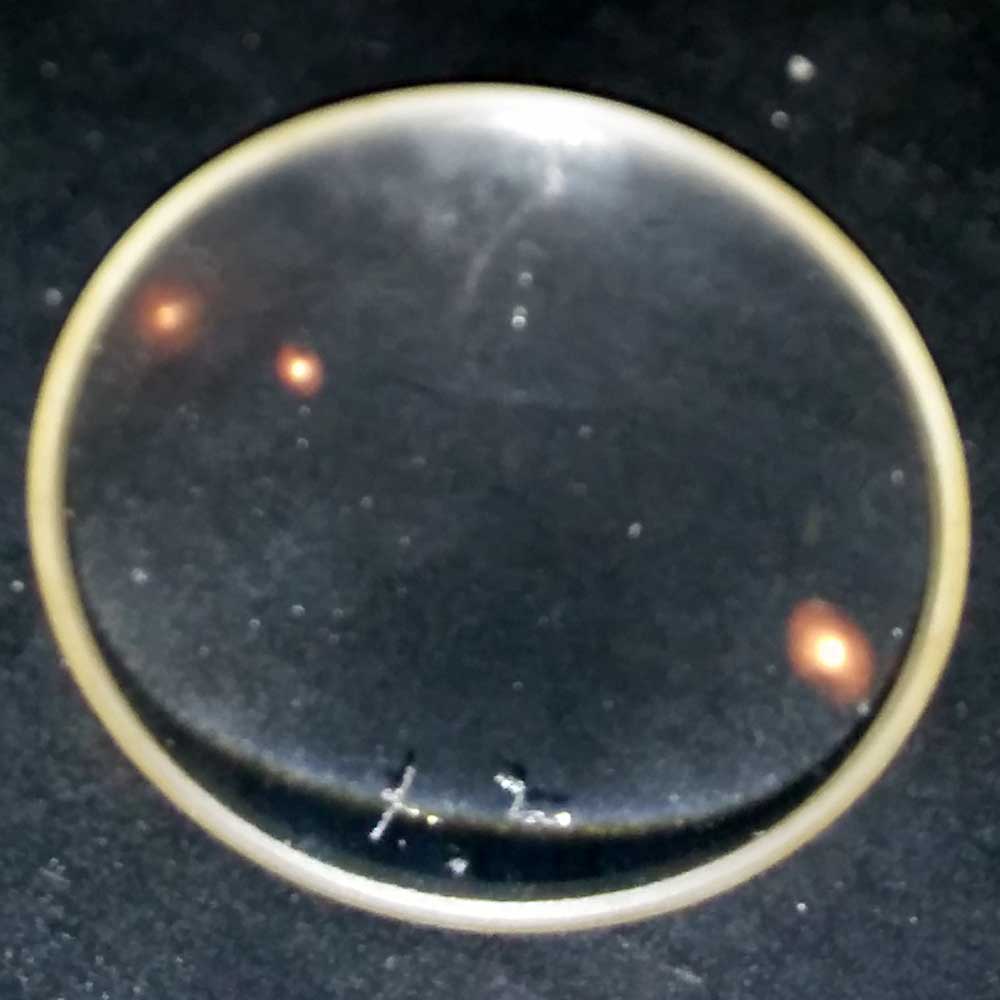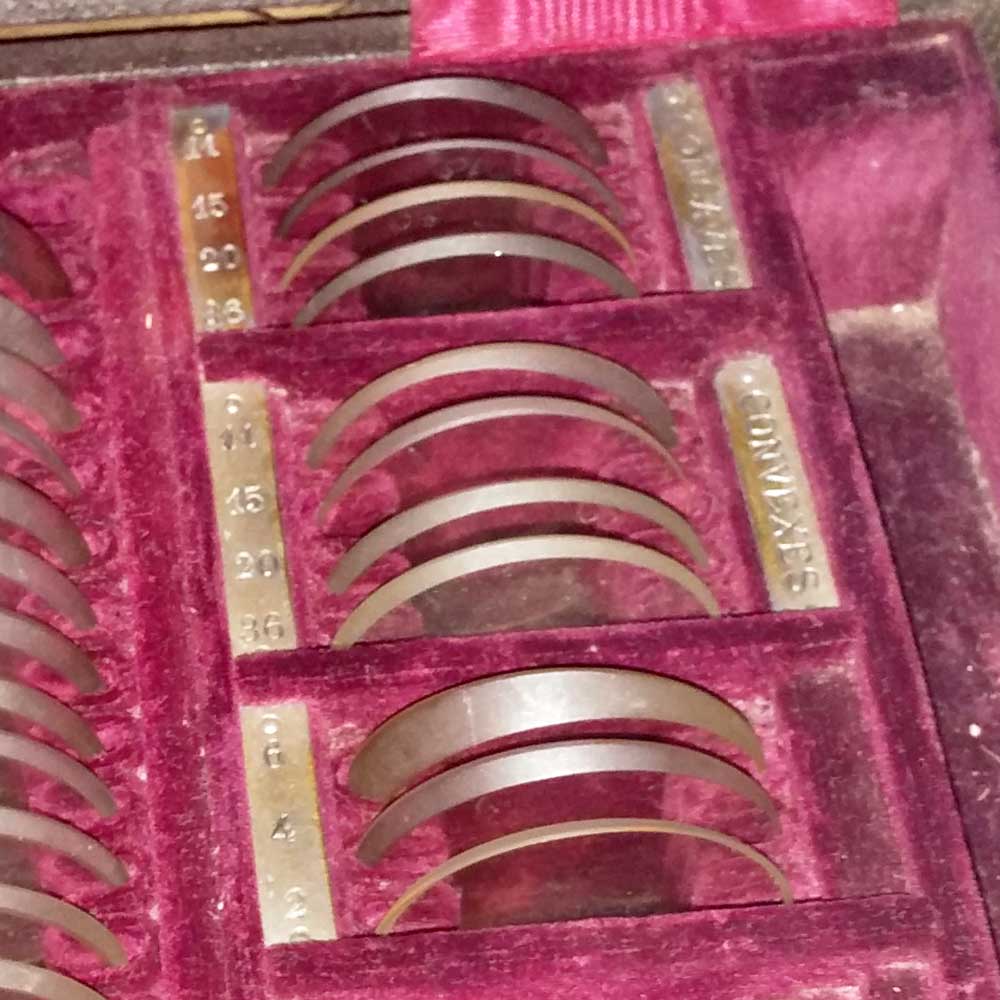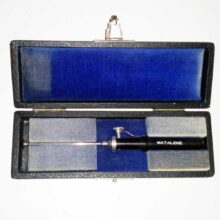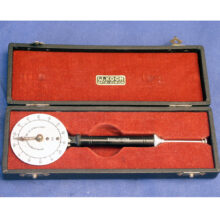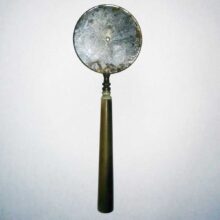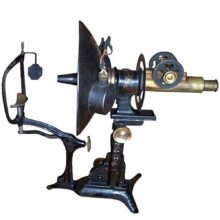Early trial lens set previous to 1875
Early trial lens set previous to 1875. In 1863, Donders figured out how to reliably determine the power of a lens. In 1864, Monoyer, a French ophthalmologist invented the diopter for describing the power of a lens. Before that the power of a lens was described by its focal length in inches.
In 1865, the diopter, based on the metric system, was adopted by the world at an ophthalmology conference held in Heidelberg.
Previous to 1875 all trial lenses were marked in inches of focal length as this set is.
After 1875 trial lenses were marked in diopters of power which is 1/focal length in meters (also, D=100/focal length in cm.)
This trial lens set consists of “convexes” and “concaves”. The lenses are biconvex and biconcave in design. Each lens is etched with its focal length in inches at its margin.
There are 23 plus lenses and 23 minus lenses ranging from 2 inch to 48 inch focal lengths. There are also 4 concave and 4 convex cylinder lenses (11,15,20, 36 inches in focal length).
There are 3 prisms of 2,4,6 units.
The case is 7 1/2 inches square and 2 1/4 inches in height. It is made of wood with a badly worn leather covering.
There are two front latches to secure the lid.
The lid is lined with red satin and the lens portion is lined with red velvet.
Shortly after this style of trial lenses were used, trial lenses were made with metal rings around them to protect the glass lens.
These unprotected lenses were put in a trial frame which had a spring-like lever projecting upwards which would secure the lens in position while it was being used.
This very rare trial lens set is from the earliest days of trial lens history. It is unsigned.
Previous to trial lenses, glasses were sold all ready made and then fit by trial and error.


